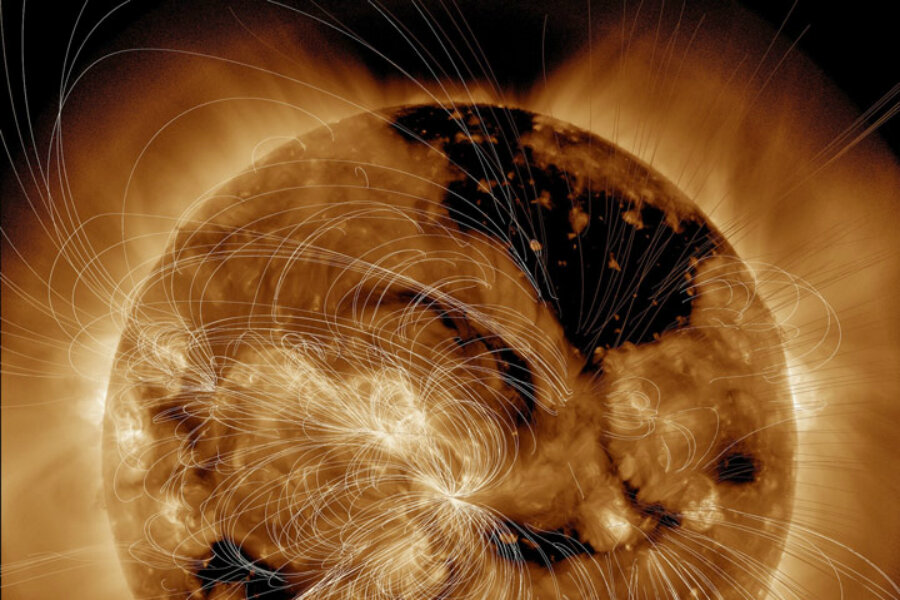NASA spots giant hole enveloping sun
Loading...
Black hole sun, won’t you come and wash away the rain....
This week, NASA’s Solar Dynamics Observatory captured an incredible sight – a massive dark spot spreading across the sun’s surface. The astronomical phenomenon, known as a coronal hole, has captivated spectators for its apocalyptic appearance.
But aside from a few cosmic inconveniences, it’s perfectly harmless.
A coronal hole is a low-density spot in the corona, which is the plasma layer that surrounds our sun. It opens the sun’s magnetic field to interplanetary space, creating solar wind streams that shoot coronal matter outward.
“The plasma structures visible in extreme ultraviolet (EUV) imagery are not present in the coronal hole regions, hence their darker appearance,” says Robert Steenburgh, a researcher at the National Oceanic and Atmospheric Administration's Space Weather Prediction Center in Boulder, Colo., in an email to The Christian Science Monitor. “The hole is not visible in all types of imagery, [such as] white light images of the sun.”
Coronal holes are a natural phenomenon that occur sporadically, and they’re generally not a cause for concern despite their chilling appearance. But some effects can still be felt “downstream,” on our side of the solar system.
“Downstream, you get the phenomenon known as coronal mass ejection (CME), which is a giant plume of billions and billions of tons of plasma that’s flowing from sun to Earth,” says Bob Weigel, director of the Space Weather Lab at George Mason University in Fairfax, Va., in a phone interview with the Monitor.
The resulting geomagnetic storms can interfere with radio signals, disrupt airline communication, and cause GPS errors. In 1989, a geomagnetic storm caused the Hydro-Québec power network to crash. The resulting blackout affected 6 million people and lasted nine hours.
Space weather also affects machines and humans outside Earth's protective magnetosphere. Astronauts have strict exposure limits to protect themselves from solar particle radiation, which spikes during coronal hole events. A large solar event did occur between the Apollo 16 and Apollo 17 missions – if the timing had been off on either side, astronauts could have experienced “life threatening” particle radiation, according to NASA. The high-powered particles emitted from coronal holes can also shorten satellite lifespans.
But solar storms aren’t just a nuisance – they can also create some pretty spectacular views.
In October, a similar coronal hole induced dramatic auroras on Earth, NASA reported. For several nights, the multi-colored display was visible to the naked eye. With any luck, this new occurrence might do the same.
But coronal holes and northern lights are nothing new. So why all the hype now?
“Investigators working on NASA missions are under constant pressure to generate PR images for NASA public affairs folks to feed out to the public,” says John Mariska, a research professor specializing in space weather at George Mason University, in an email to the Monitor. “In my view, there is a tendency to overdo the hype. That being said, trying to inspire young people to consider a career in science is very important to the future of our country.”






